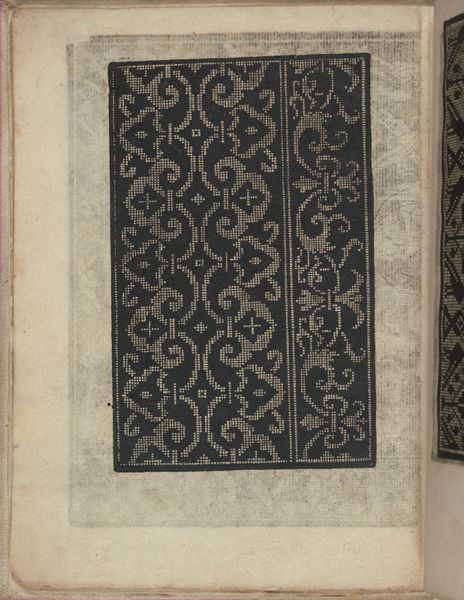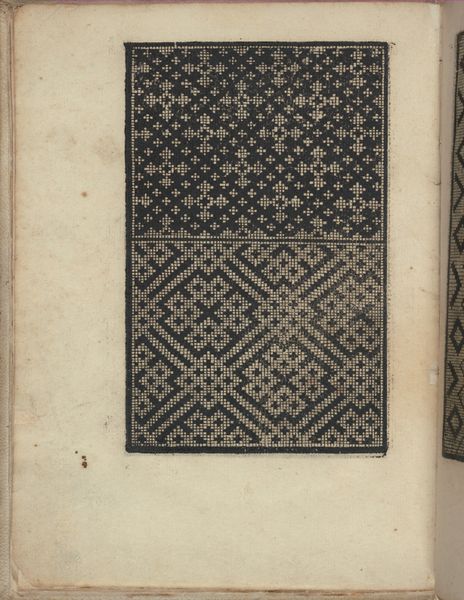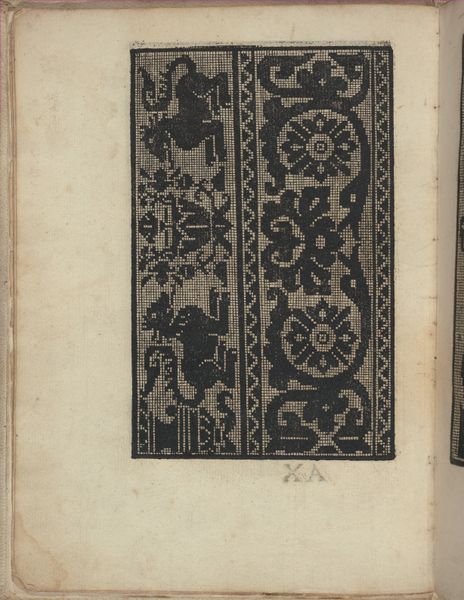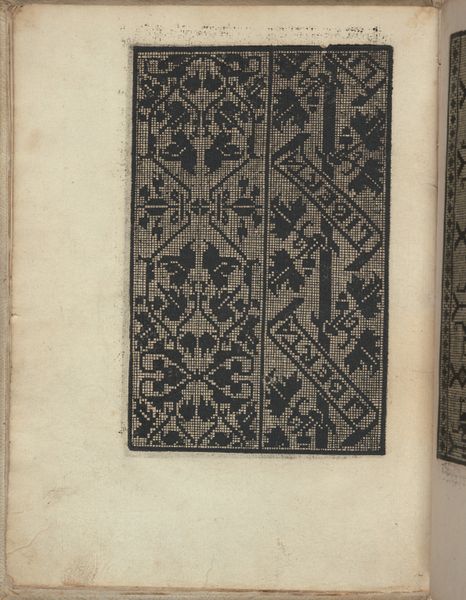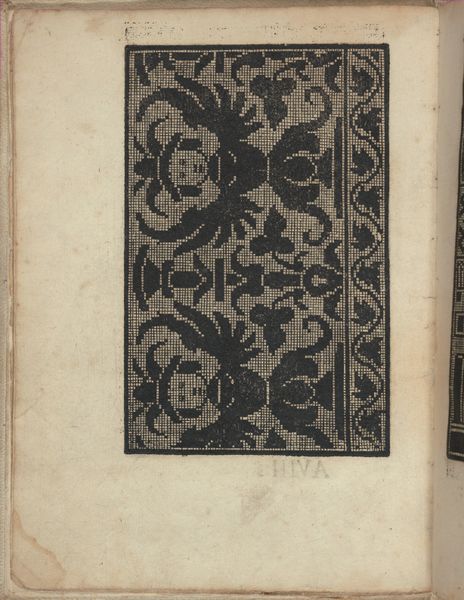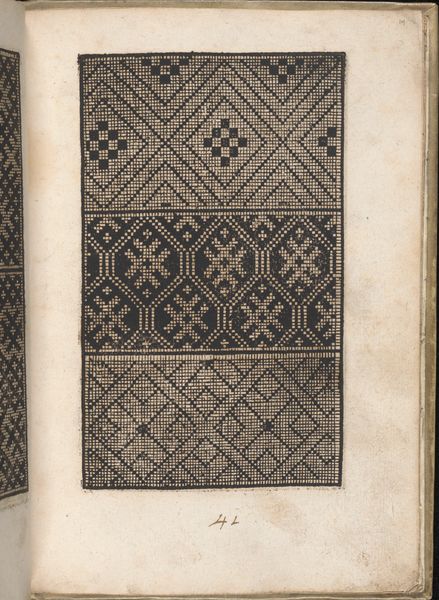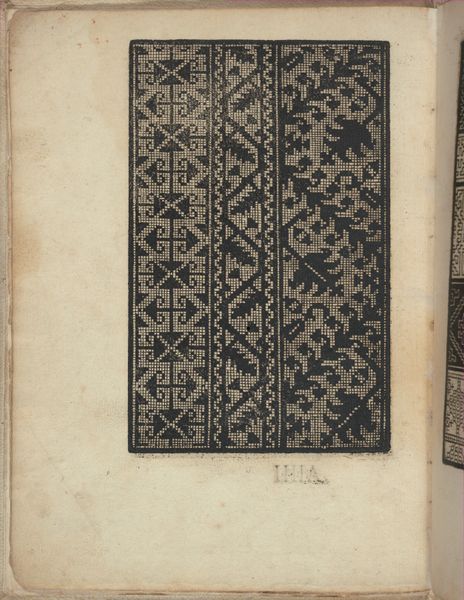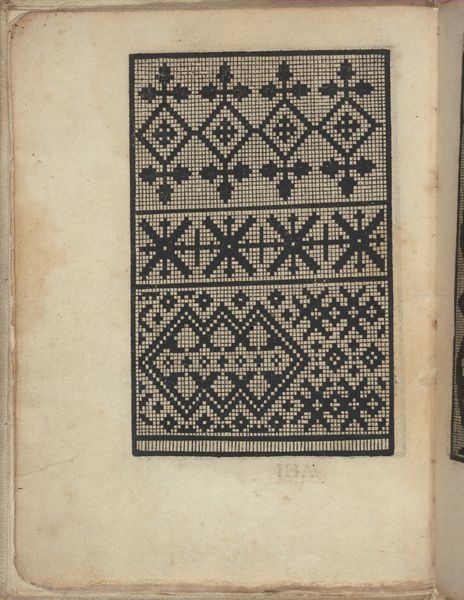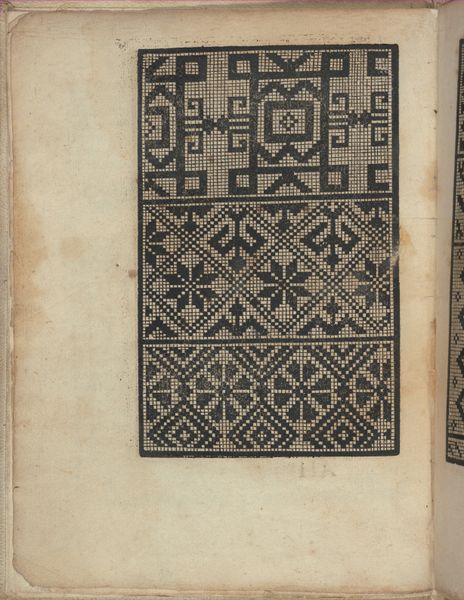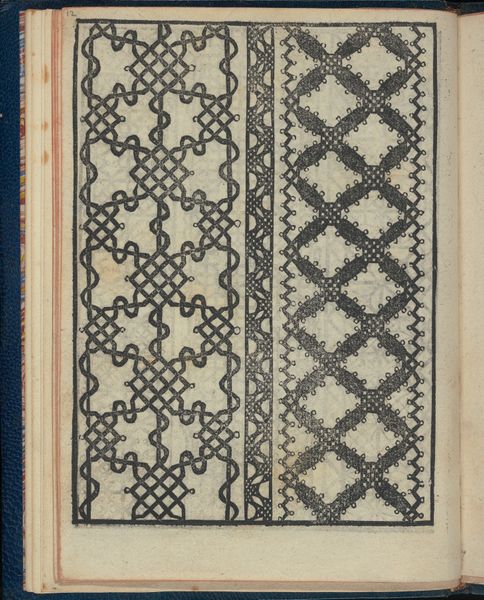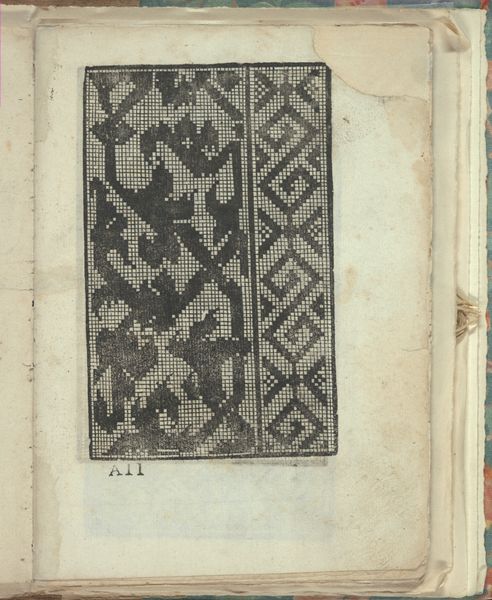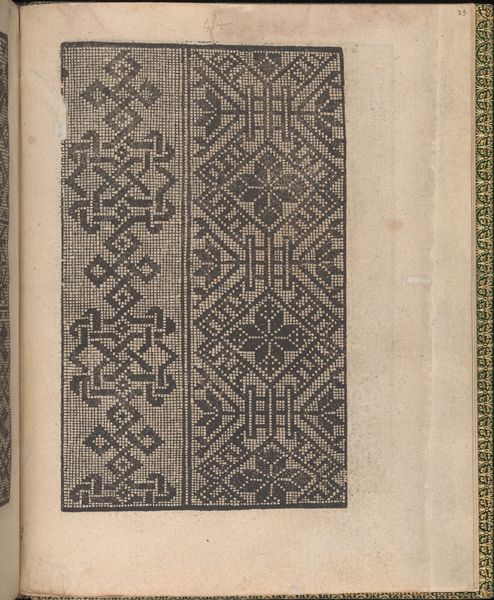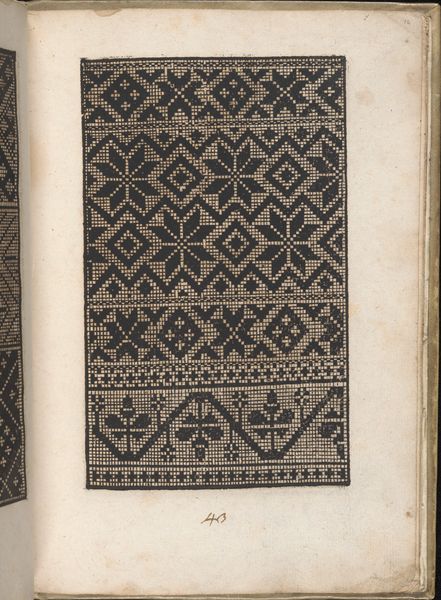
Esemplario di Lauori..., page 12 (verso) 1532
0:00
0:00
drawing, graphic-art, print, paper
#
drawing
#
graphic-art
#
aged paper
#
toned paper
# print
#
book
#
paper
#
11_renaissance
Dimensions: Overall: 8 7/16 x 6 5/16 in. (21.5 x 16 cm)
Copyright: Public Domain
Curator: This print, titled "Esemplario di Lauori...", or "Examples of Works," created in 1532 by Giovanni Andrea Vavassore, gives us a glimpse into the designs used for needlework and lace-making during the Renaissance. Editor: My first thought? Beautifully dense! Like looking at a coded message, intricate and begging to be deciphered, all those little squares pixelating the floral motifs. It feels almost contemporary despite its age, that sharp contrast between the dark print and the creamy paper. Curator: Exactly! Think about how radical accessible design patterns were at this time. The printing press enabled the relatively affordable circulation of design ideas, democratizing the possibility of sophisticated art creation in the home. The floral patterns you noticed were extremely popular, often appearing in woven textiles and tapestries. Editor: I imagine women gathered, poring over these designs. You know, embroidery, then as now, could be simultaneously liberating and constricting, right? Skillful needlework might signal status, even agency, while also cementing women in domestic roles. Curator: Yes, the double-edged sword of domesticity! This print exists within a broader context of burgeoning female artistry, but always mediated through these prescribed societal expectations. Though this "Esemplario" helped solidify those cultural limitations as much as empower. Editor: I find myself thinking of the labour involved in reproducing these patterns in thread—all that precise handwork versus the relative ease of the printed image. Is it an act of devotion? Or resistance? Curator: Both perhaps? I see a tension, even today, in how we value labor. There is the high art and low craft divide too, or this perceived distinction. These designs complicate it even further. They're utilitarian art that demands engagement to achieve its higher forms. Editor: Looking closer, it’s the repetition that captivates me—the near-perfect mirroring, hinting at mathematical structures hidden within the apparent naturalism of the leaves and blossoms. It makes me reflect on how something very patterned can still look hand-made and warm. It feels like finding math in nature again. Curator: I see that, how something so obviously produced for a market speaks to individuality through labor. When the hand puts needle to thread a connection forms to those women of centuries ago. So much to appreciate, for sure. Editor: Absolutely. Art history continues to echo and inspire us onward, pattern upon pattern, story upon story.
Comments
No comments
Be the first to comment and join the conversation on the ultimate creative platform.

